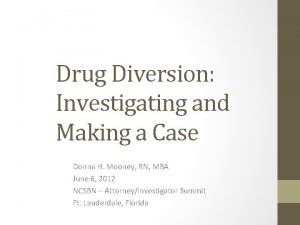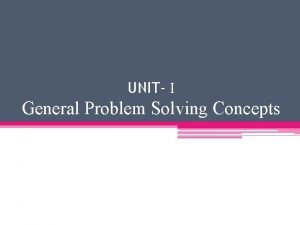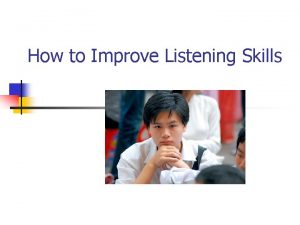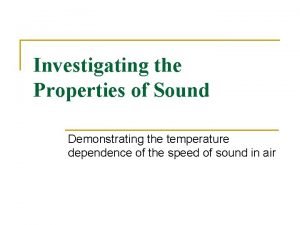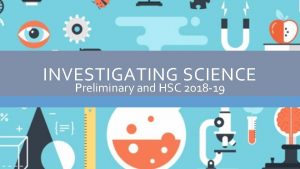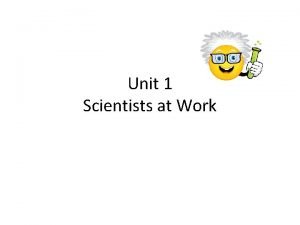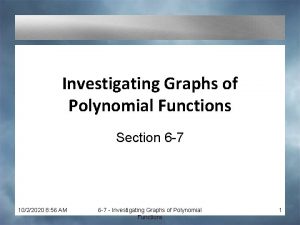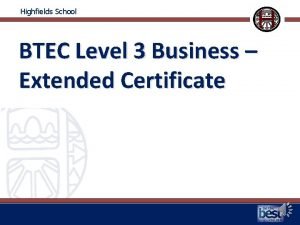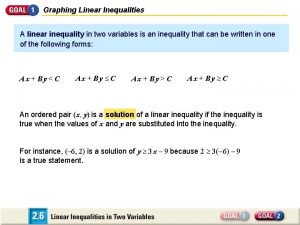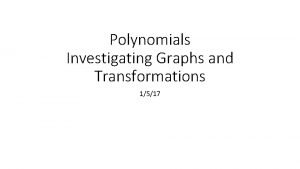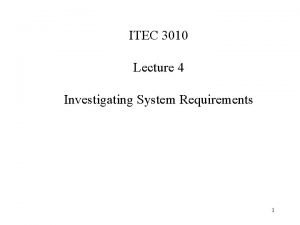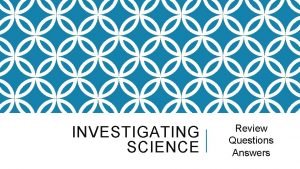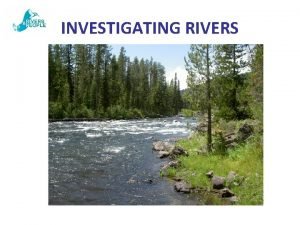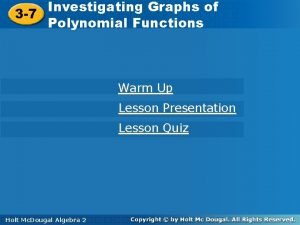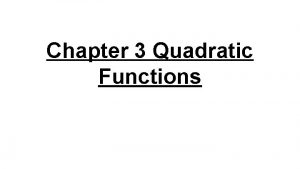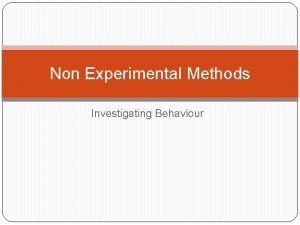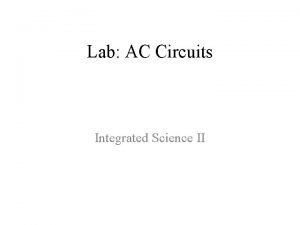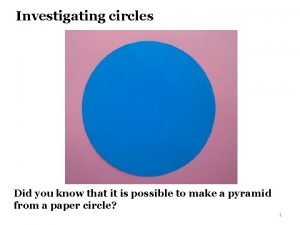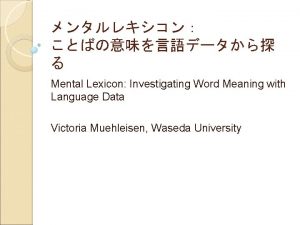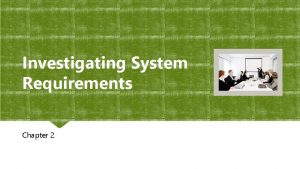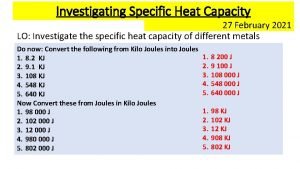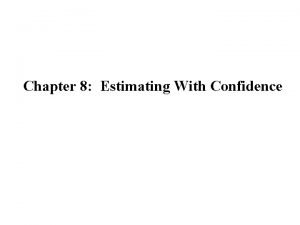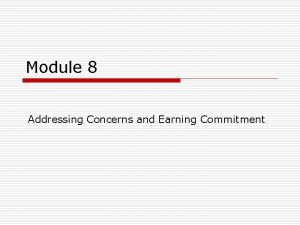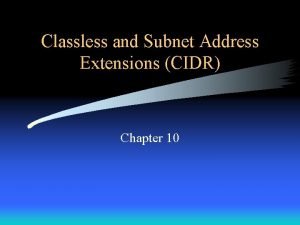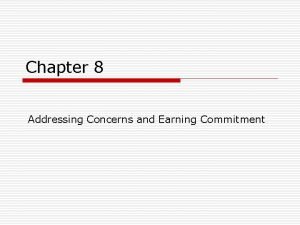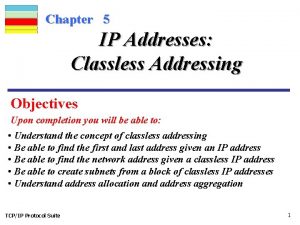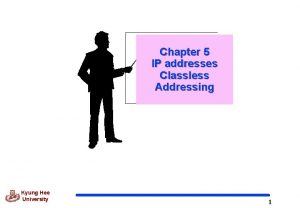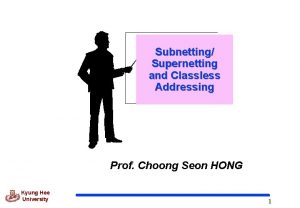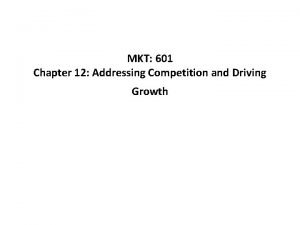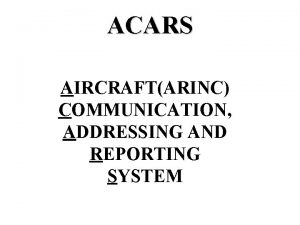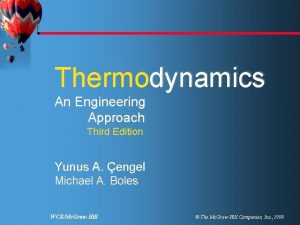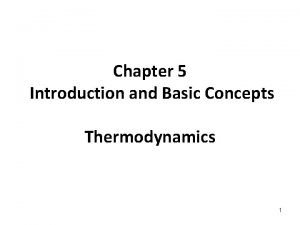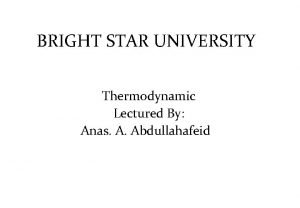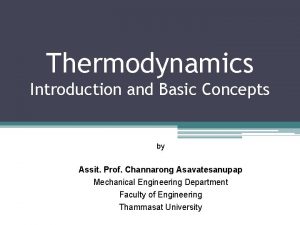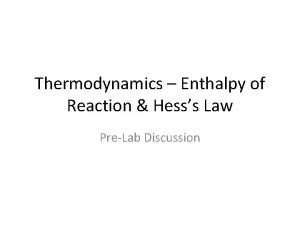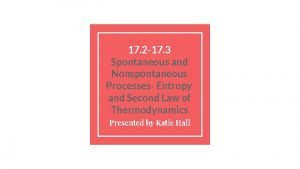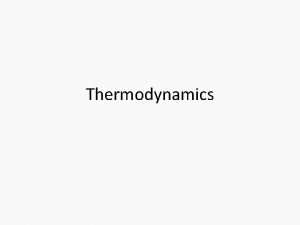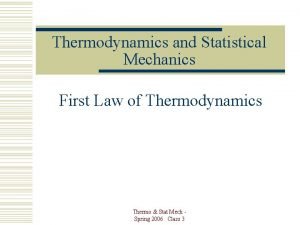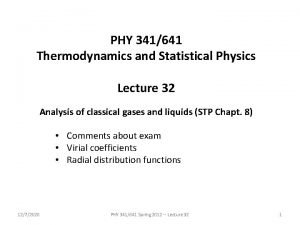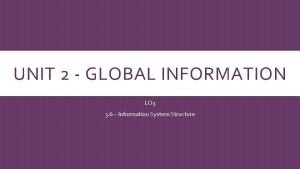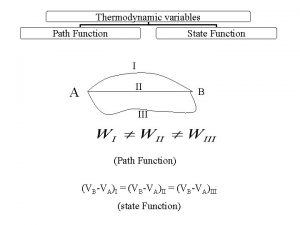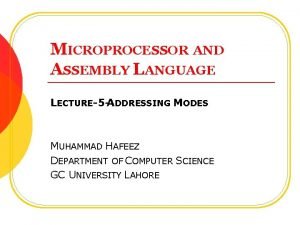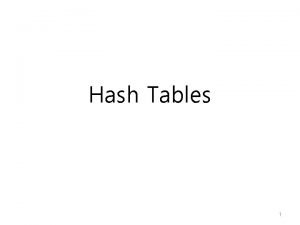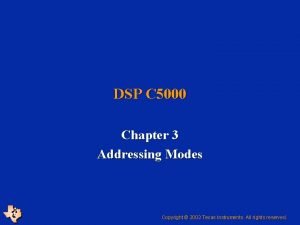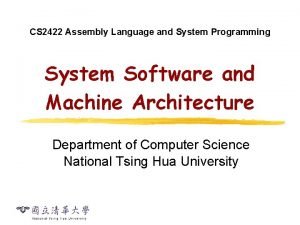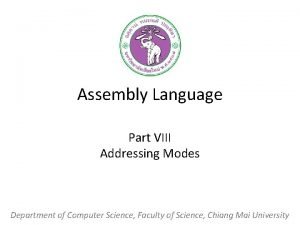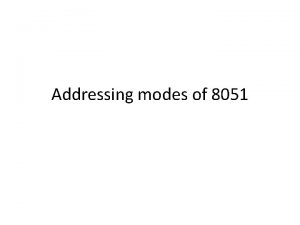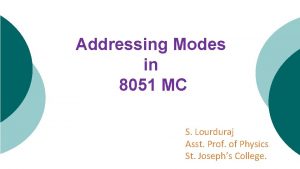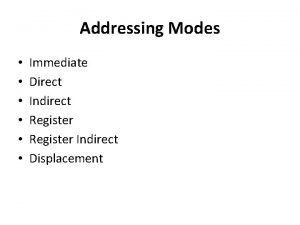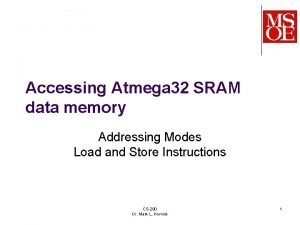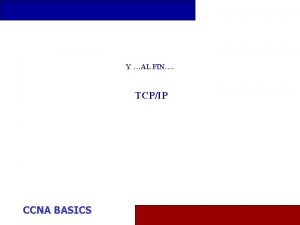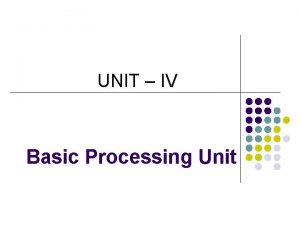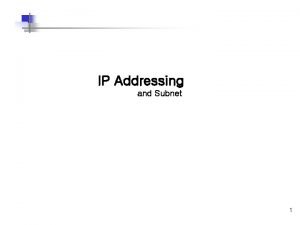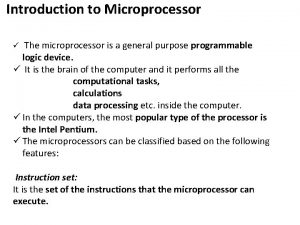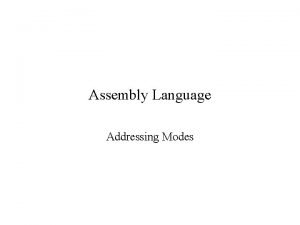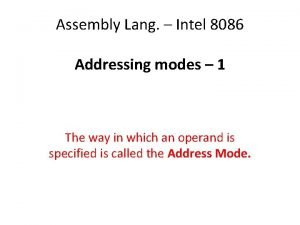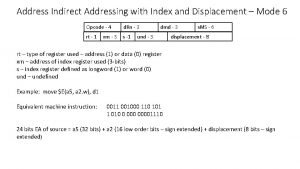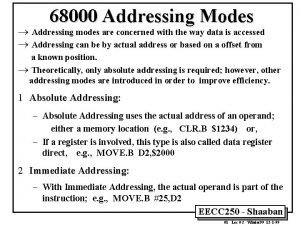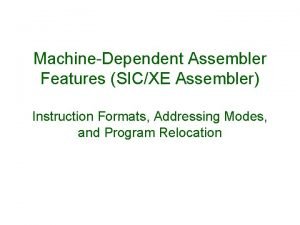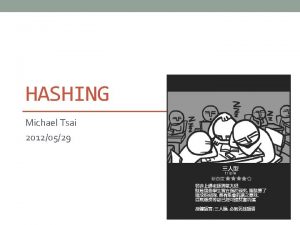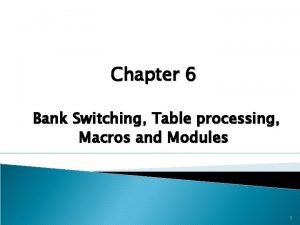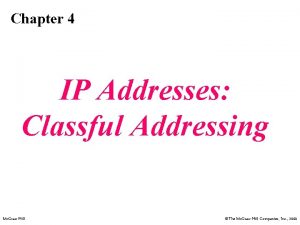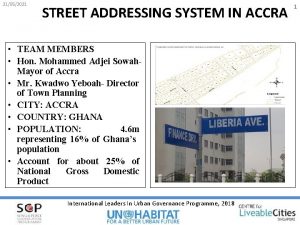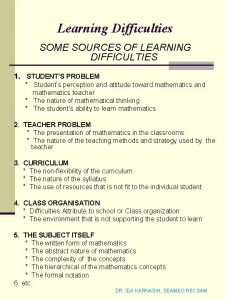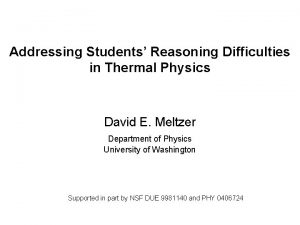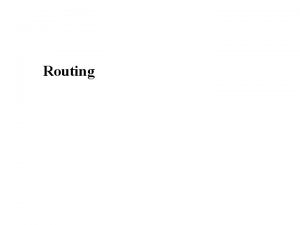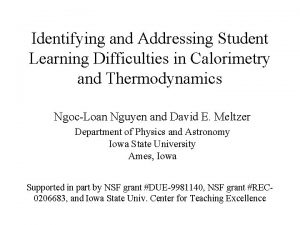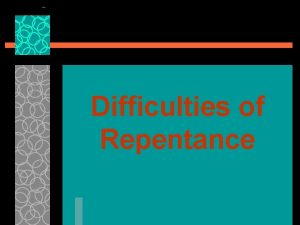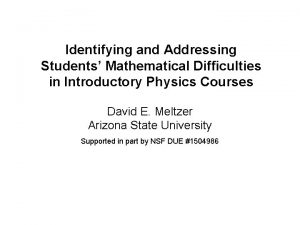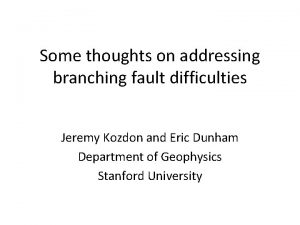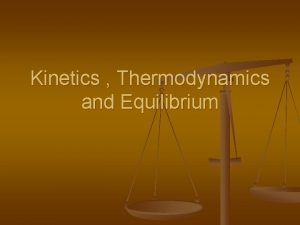Investigating and Addressing Learning Difficulties in Thermodynamics David













































![[This diagram was not shown to students] [This diagram was not shown to students]](https://slidetodoc.com/presentation_image_h/2dc6c59a019b1bb616455b240e620c9f/image-46.jpg)
![[This diagram was not shown to students] initial state [This diagram was not shown to students] initial state](https://slidetodoc.com/presentation_image_h/2dc6c59a019b1bb616455b240e620c9f/image-47.jpg)



![[This diagram was not shown to students] [This diagram was not shown to students]](https://slidetodoc.com/presentation_image_h/2dc6c59a019b1bb616455b240e620c9f/image-51.jpg)
![[This diagram was not shown to students] [This diagram was not shown to students]](https://slidetodoc.com/presentation_image_h/2dc6c59a019b1bb616455b240e620c9f/image-52.jpg)
![[This diagram was not shown to students] [This diagram was not shown to students]](https://slidetodoc.com/presentation_image_h/2dc6c59a019b1bb616455b240e620c9f/image-53.jpg)






![[This diagram was not shown to students] [This diagram was not shown to students]](https://slidetodoc.com/presentation_image_h/2dc6c59a019b1bb616455b240e620c9f/image-60.jpg)
![[This diagram was not shown to students] [This diagram was not shown to students]](https://slidetodoc.com/presentation_image_h/2dc6c59a019b1bb616455b240e620c9f/image-61.jpg)
![[This diagram was not shown to students] TBC = 0 [This diagram was not shown to students] TBC = 0](https://slidetodoc.com/presentation_image_h/2dc6c59a019b1bb616455b240e620c9f/image-62.jpg)




![[This diagram was not shown to students] [This diagram was not shown to students]](https://slidetodoc.com/presentation_image_h/2dc6c59a019b1bb616455b240e620c9f/image-67.jpg)
![[This diagram was not shown to students] [This diagram was not shown to students]](https://slidetodoc.com/presentation_image_h/2dc6c59a019b1bb616455b240e620c9f/image-68.jpg)
![[This diagram was not shown to students] [This diagram was not shown to students]](https://slidetodoc.com/presentation_image_h/2dc6c59a019b1bb616455b240e620c9f/image-69.jpg)


![[This diagram was not shown to students] [This diagram was not shown to students]](https://slidetodoc.com/presentation_image_h/2dc6c59a019b1bb616455b240e620c9f/image-72.jpg)
![[This diagram was not shown to students] |WBC| > |WAB| [This diagram was not shown to students] |WBC| > |WAB|](https://slidetodoc.com/presentation_image_h/2dc6c59a019b1bb616455b240e620c9f/image-73.jpg)
![[This diagram was not shown to students] |WBC| > |WAB| WBC < 0 [This diagram was not shown to students] |WBC| > |WAB| WBC < 0](https://slidetodoc.com/presentation_image_h/2dc6c59a019b1bb616455b240e620c9f/image-74.jpg)
![[This diagram was not shown to students] |WBC| > |WAB| WBC < 0 Wnet [This diagram was not shown to students] |WBC| > |WAB| WBC < 0 Wnet](https://slidetodoc.com/presentation_image_h/2dc6c59a019b1bb616455b240e620c9f/image-75.jpg)


![Results on Question #6 (i) (c) Wnet < 0: [correct] Interview sample: 19% Upper-level Results on Question #6 (i) (c) Wnet < 0: [correct] Interview sample: 19% Upper-level](https://slidetodoc.com/presentation_image_h/2dc6c59a019b1bb616455b240e620c9f/image-78.jpg)


![[This diagram was not shown to students] U = Q – W U = [This diagram was not shown to students] U = Q – W U =](https://slidetodoc.com/presentation_image_h/2dc6c59a019b1bb616455b240e620c9f/image-81.jpg)
![[This diagram was not shown to students] U = Q – W U = [This diagram was not shown to students] U = Q – W U =](https://slidetodoc.com/presentation_image_h/2dc6c59a019b1bb616455b240e620c9f/image-82.jpg)

![Results on Question #6 (ii) (c) Qnet < 0: [correct] Interview sample: 16% Upper-level Results on Question #6 (ii) (c) Qnet < 0: [correct] Interview sample: 16% Upper-level](https://slidetodoc.com/presentation_image_h/2dc6c59a019b1bb616455b240e620c9f/image-84.jpg)



![Spontaneous Process Question [Introductory-Course Version] For each of the following questions consider a system Spontaneous Process Question [Introductory-Course Version] For each of the following questions consider a system](https://slidetodoc.com/presentation_image_h/2dc6c59a019b1bb616455b240e620c9f/image-88.jpg)







- Slides: 95

Investigating and Addressing Learning Difficulties in Thermodynamics David E. Meltzer Department of Physics University of Washington Seattle, Washington Supported in part by National Science Foundation Grant Nos. DUE 9981140, PHY 0406724, and PHY 0604703

Collaborators – Tom Greenbowe (Iowa State U. Chemistry) – John Thompson (U. Maine Physics) – Craig Ogilvie (ISU Physics) Students – Ngoc-Loan Nguyen (ISU M. S. 2003) – Warren Christensen (ISU Ph. D. 2007) – Tom Stroman (ISU physics graduate student) Funding – NSF Division of Undergraduate Education – NSF Division of Physics

Research on the Learning and Teaching of Thermodynamics • Investigate student learning of thermodynamics in physics and other fields • Probe evolution of students’ thinking from introductory through advanced-level course • Develop research-based curricular materials

Phase One of Project: Student Learning in Introductory Physics Course • Probe students enrolled in second-semester calculus-based physics course (mostly engineering students). – Written diagnostic questions administered last week of class. – Detailed interviews carried out with volunteers. [two course instructors, 20 recitation instructors]

Phase Two of Project: Student Learning in Upper-Level Physics Course • Topics: Approximately equal balance between classical macroscopic thermodynamics, and statistical thermodynamics • Students enrolled [Ninitial = 14 (2003) and 19 (2004)] 90% were physics majors or physics/engineering double majors 90% were juniors or above All students had previously studied thermodynamics (some at the advanced level)

Performance Comparison: Upper-level vs. Introductory Students • Diagnostic questions given to students in introductory calculus-based course after instruction was complete: – 1999 -2001: 653 students responded to written questions – 2002: 32 self-selected, high-performing students participated in one-on-one interviews • Written pre-test questions given to Upperlevel students on first day of class

Performance Comparison: Upper-level vs. Introductory Students • Diagnostic questions given to students in introductory calculus-based course after instruction was complete: – 1999 -2001: 653 students responded to written questions – 2002: 32 self-selected, high-performing students participated in one-on-one interviews • Written pre-test questions given to Upperlevel students on first day of class

Grade Distributions: Interview Sample vs. Full Class Interview Sample: 34% above 91 st percentile; 50% above 81 st percentile

This P-V diagram represents a system consisting of a fixed amount of ideal gas that undergoes two different processes in going from state A to state B:

This P-V diagram represents a system consisting of a fixed amount of ideal gas that undergoes two different processes in going from state A to state B: [In these questions, W represents the work done by the system during a process; Q represents the heat absorbed by the system during a process. ] 1. Is W for Process #1 greater than, less than, or equal to that for Process #2? Explain. 2. Is Q for Process #1 greater than, less than, or equal to that for Process #2?

This P-V diagram represents a system consisting of a fixed amount of ideal gas that undergoes two different processes in going from state A to state B: [In these questions, W represents the work done by the system during a process; Q represents the heat absorbed by the system during a process. ] 1. Is W for Process #1 greater than, less than, or equal to that for Process #2? Explain. 2. Is Q for Process #1 greater than, less than, or equal to that for Process #2?

This P-V diagram represents a system consisting of a fixed amount of ideal gas that undergoes two different processes in going from state A to state B: [In these questions, W represents the work done by the system during a process; Q represents the heat absorbed by the system during a process. ] 1. Is W for Process #1 greater than, less than, or equal to that for Process #2? Explain. 2. Is Q for Process #1 greater than, less than, or equal to that for Process #2?

This P-V diagram represents a system consisting of a fixed amount of ideal gas that undergoes two different processes in going from state A to state B: W 1 > W 2 [In these questions, W represents the work done by the system during a process; Q represents the heat absorbed by the system during a process. ] 1. Is W for Process #1 greater than, less than, or equal to that for Process #2? Explain. 2. Is Q for Process #1 greater than, less than, or equal to that for Process #2?

This P-V diagram represents a system consisting of a fixed amount of ideal gas that undergoes two different processes in going from state A to state B: W 1 > W 2 [In these questions, W represents the work done by the system during a process; Q represents the heat absorbed by the system during a process. ] 1. Is W for Process #1 greater than, less than, or equal to that for Process #2? Explain. 2. Is Q for Process #1 greater than, less than, or equal to that for Process #2?

Responses to Diagnostic Question #1 (Work question) W 1 > W 2 W 1 = W 2 W 1 < W 2 1999 -2001 2002 Introductory Physics (Post-test) Written Sample (N=653) Introductory Physics (Post-test) Interview Sample (N=32) 2004 Upper- Level (Pretest) (N=19)

Responses to Diagnostic Question #1 (Work question) W 1 = W 2 1999 -2001 2002 Introductory Physics (Post-test) Written Sample (N=653) Introductory Physics (Post-test) Interview Sample (N=32) Thermal Physics (Pretest) 30% 22% 24% 2004 (N=21)

Responses to Diagnostic Question #1 (Work question) W 1 = W 2 1999 -2001 2002 Introductory Physics (Post-test) Written Sample (N=653) Introductory Physics (Post-test) Interview Sample (N=32) Thermal Physics (Pretest) 30% 22% 24% 2004 (N=21)

Responses to Diagnostic Question #1 (Work question) W 1 = W 2 1999 -2001 2002 Introductory Physics (Post-test) Written Sample (N=653) Introductory Physics (Post-test) Interview Sample (N=32) Thermal Physics (Pretest) 30% 22% 24% 2004 (N=21)

Responses to Diagnostic Question #1 (Work question) W 1 = W 2 1999 -2001 2002 Introductory Physics (Post-test) Written Sample (N=653) Introductory Physics (Post-test) Interview Sample (N=32) Upper-level Course (Pretest) 30% 22% 2003 (N=14)

Responses to Diagnostic Question #1 (Work question) W 1 = W 2 1999 -2001 2002 Introductory Physics (Post-test) Written Sample (N=653) Introductory Physics (Post-test) Interview Sample (N=32) Upper-level Course (Pretest) 30% 22% 2004 (N=19)

Responses to Diagnostic Question #1 (Work question) W 1 = W 2 1999 -2001 2002 Introductory Physics (Post-test) Written Sample (N=653) Introductory Physics (Post-test) Interview Sample (N=32) Upper-level Course (Pretest) 30% 22% 2004 (N=19) About one-fifth of Upper-level students believe work done is equal in both processes

Explanations Given by Upper-Level Students to Justify W 1 = W 2 • “Equal, path independent. ” • “Equal, the work is the same regardless of path taken. ” Some students come to associate work with phrases only used in connection with state functions. Explanations similar to those offered by introductory students

This P-V diagram represents a system consisting of a fixed amount of ideal gas that undergoes two different processes in going from state A to state B: [In these questions, W represents the work done by the system during a process; Q represents the heat absorbed by the system during a process. ] 1. Is W for Process #1 greater than, less than, or equal to that for Process #2? Explain. 2. Is Q for Process #1 greater than, less than, or equal to that for Process #2?

This P-V diagram represents a system consisting of a fixed amount of ideal gas that undergoes two different processes in going from state A to state B: [In these questions, W represents the work done by the system during a process; Q represents the heat absorbed by the system during a process. ] 1. Is W for Process #1 greater than, less than, or equal to that for Process #2? Explain. 2. Is Q for Process #1 greater than, less than, or equal to that for Process #2?

This P-V diagram represents a system consisting of a fixed amount of ideal gas that undergoes two different processes in going from state A to state B: Change in internal energy is the same for Process #1 and Process #2. [In these questions, W represents the work done by the system during a process; Q represents the heat absorbed by the system during a process. ] 1. Is W for Process #1 greater than, less than, or equal to that for Process #2? Explain. 2. Is Q for Process #1 greater than, less than, or equal to that for Process #2?

This P-V diagram represents a system consisting of a fixed amount of ideal gas that undergoes two different processes in going from state A to state B: Change in internal The system does more energy is the same work in Process #1, so Process and it for must absorb#1 more Process #2. same heat to reach final value of internal energy: Q 1 > Q 2 [In these questions, W represents the work done by the system during a process; Q represents the heat absorbed by the system during a process. ] 1. Is W for Process #1 greater than, less than, or equal to that for Process #2? Explain. 2. Is Q for Process #1 greater than, less than, or equal to that for Process #2?

Responses to Diagnostic Question #2 (Heat question) Q 1 > Q 2 Q 1 = Q 2 Q 1 < Q 2 1999 -2001 2002 Introductory Physics (Post-test) Written Sample (N=653) Introductory Physics (Post-test) Interview Sample (N=32) 2004 Upper-level Course (Pretest) (N=19)

Responses to Diagnostic Question #2 (Heat question) Q 1 = Q 2

Responses to Diagnostic Question #2 (Heat question) 1999 -2001 Introductory Physics (Post-test) Written Sample (N=653) Q 1 = Q 2 38%

Responses to Diagnostic Question #2 (Heat question) 1999 -2001 2002 Introductory Physics (Post-test) Written Sample Interview Sample (N=653) (N=32) Q 1 = Q 2 38% 47%

Responses to Diagnostic Question #2 (Heat question) 1999 -2001 2002 Introductory Physics (Post-test) Written Sample Interview Sample (N=653) (N=32) Q 1 = Q 2 38% 47% 2003 -4 Upper-level Course (Pretest) (N=33) 30%

Explanations Given by Upper-Level Students to Justify Q 1 = Q 2 • “Equal. They both start at the same place and end at the same place. ” • “The heat transfer is the same because they are starting and ending on the same isotherm. ” Ø Many Upper-level students stated or implied that heat transfer is independent of process, similar to claims made by introductory students.

Responses to Diagnostic Question #2 (Heat question) Q 1 > Q 2 Q 1 = Q 2 Q 1 < Q 2 1999 -2001 2002 Introductory Physics (Post-test) Written Sample (N=653) Introductory Physics (Post-test) Interview Sample (N=32) 2004 Upper-level Course (Pretest) (N=19)

Responses to Diagnostic Question #2 (Heat question) 1999 -2001 2002 Introductory Physics (Post-test) Written Sample Interview Sample (N=653) (N=32) 2004 Thermal Physics (Pretest) (N=21) Q 1 > Q 2 45% 34% 33% [Correct answer] 11% 19% 33%

Responses to Diagnostic Question #2 (Heat question) 1999 -2001 2002 Introductory Physics (Post-test) Written Sample Interview Sample (N=653) (N=32) 2004 Thermal Physics (Pretest) (N=21) Q 1 > Q 2 45% 34% 33% Correct or partially correct explanation 11% 19% 33%

Responses to Diagnostic Question #2 (Heat question) 1999 -2001 2002 Introductory Physics (Post-test) Written Sample Interview Sample (N=653) (N=32) 2004 Thermal Physics (Pretest) (N=21) Q 1 > Q 2 45% 34% 33% Correct or partially correct explanation 11% 19% 33%

Responses to Diagnostic Question #2 (Heat question) 1999 -2001 2002 Introductory Physics (Post-test) Written Sample Interview Sample (N=653) (N=32) 2003 Upper-level Course (Pretest) (N=14) Q 1 > Q 2 45% 34% 35% Correct or partially correct explanation 11% 19% 33%

Responses to Diagnostic Question #2 (Heat question) 1999 -2001 2002 Introductory Physics (Post-test) Written Sample Interview Sample (N=653) (N=32) 2003 Upper-level Course (Pretest) (N=14) Q 1 > Q 2 45% 34% 35% Correct or partially correct explanation 11% 19% 30%

Responses to Diagnostic Question #2 (Heat question) 1999 -2001 2002 Introductory Physics (Post-test) Written Sample Interview Sample (N=653) (N=32) 2004 Upper-level Course (Pretest) (N=19) Q 1 > Q 2 45% 34% 30% Correct or partially correct explanation 11% 19% 30%

Responses to Diagnostic Question #2 (Heat question) 1999 -2001 2002 Introductory Physics (Post-test) Written Sample Interview Sample (N=653) (N=32) 2004 Upper-level Course (Pretest) (N=19) Q 1 > Q 2 45% 34% 30% Correct or partially correct explanation 11% 19% 30% Performance of upper-level students significantly better than introductory students in written sample

Cyclic Process Questions A fixed quantity of ideal gas is contained within a metal cylinder that is sealed with a movable, frictionless, insulating piston. The cylinder is surrounded by a large container of water with high walls as shown. We are going to describe two separate processes, Process #1 and Process #2.

Cyclic Process Questions A fixed quantity of ideal gas is contained within a metal cylinder that is sealed with a movable, frictionless, insulating piston. The cylinder is surrounded by a large container of water with high walls as shown. We are going to describe two separate processes, Process #1 and Process #2.

Cyclic Process Questions A fixed quantity of ideal gas is contained within a metal cylinder that is sealed with a movable, frictionless, insulating piston. The cylinder is surrounded by a large container of water with high walls as shown. We are going to describe two separate processes, Process #1 and Process #2.

Cyclic Process Questions A fixed quantity of ideal gas is contained within a metal cylinder that is sealed with a movable, frictionless, insulating piston. The cylinder is surrounded by a large container of water with high walls as shown. We are going to describe two separate processes, Process #1 and Process #2.

At initial time A, the gas, cylinder, and water have all been sitting in a room for a long period of time, and all of them are at room temperature movable piston Time A Entire system at room temperature. ideal gas water
![This diagram was not shown to students [This diagram was not shown to students]](https://slidetodoc.com/presentation_image_h/2dc6c59a019b1bb616455b240e620c9f/image-46.jpg)
[This diagram was not shown to students]
![This diagram was not shown to students initial state [This diagram was not shown to students] initial state](https://slidetodoc.com/presentation_image_h/2dc6c59a019b1bb616455b240e620c9f/image-47.jpg)
[This diagram was not shown to students] initial state

Beginning at time A, the water container is gradually heated, and the piston very slowly moves upward.


At time B the heating of the water stops, and the piston stops moving
![This diagram was not shown to students [This diagram was not shown to students]](https://slidetodoc.com/presentation_image_h/2dc6c59a019b1bb616455b240e620c9f/image-51.jpg)
[This diagram was not shown to students]
![This diagram was not shown to students [This diagram was not shown to students]](https://slidetodoc.com/presentation_image_h/2dc6c59a019b1bb616455b240e620c9f/image-52.jpg)
[This diagram was not shown to students]
![This diagram was not shown to students [This diagram was not shown to students]](https://slidetodoc.com/presentation_image_h/2dc6c59a019b1bb616455b240e620c9f/image-53.jpg)
[This diagram was not shown to students]

lead weight Now, empty containers are placed on top of the piston as shown. containers

lead weight Small lead weights are gradually placed in the containers, one by one, and the piston is observed to move down slowly. containers

lead weight containers


While this happens the temperature of the water is nearly unchanged, and the gas temperature remains practically constant.

At time C we stop adding lead weights to the container and the piston stops moving. The piston is now at exactly the same position it was at time A.
![This diagram was not shown to students [This diagram was not shown to students]](https://slidetodoc.com/presentation_image_h/2dc6c59a019b1bb616455b240e620c9f/image-60.jpg)
[This diagram was not shown to students]
![This diagram was not shown to students [This diagram was not shown to students]](https://slidetodoc.com/presentation_image_h/2dc6c59a019b1bb616455b240e620c9f/image-61.jpg)
[This diagram was not shown to students]
![This diagram was not shown to students TBC 0 [This diagram was not shown to students] TBC = 0](https://slidetodoc.com/presentation_image_h/2dc6c59a019b1bb616455b240e620c9f/image-62.jpg)
[This diagram was not shown to students] TBC = 0

Now, the piston is locked into place so it cannot move, and the weights are removed from the piston.

The system is left to sit in the room for many hours.

Eventually the entire system cools back down to the same room temperature it had at time A.

After cooling is complete, it is time D.
![This diagram was not shown to students [This diagram was not shown to students]](https://slidetodoc.com/presentation_image_h/2dc6c59a019b1bb616455b240e620c9f/image-67.jpg)
[This diagram was not shown to students]
![This diagram was not shown to students [This diagram was not shown to students]](https://slidetodoc.com/presentation_image_h/2dc6c59a019b1bb616455b240e620c9f/image-68.jpg)
[This diagram was not shown to students]
![This diagram was not shown to students [This diagram was not shown to students]](https://slidetodoc.com/presentation_image_h/2dc6c59a019b1bb616455b240e620c9f/image-69.jpg)
[This diagram was not shown to students]

Question #6: Consider the entire process from time A to time D. (i) Is the net work done by the gas on the environment during that process (a) greater than zero, (b) equal to zero, or (c) less than zero? (ii) Is the total heat transfer to the gas during that process (a) greater than zero, (b) equal to zero, or (c) less than zero?

Question #6: Consider the entire process from time A to time D. (i) Is the net work done by the gas on the environment during that process (a) greater than zero, (b) equal to zero, or (c) less than zero? (ii) Is the total heat transfer to the gas during that process (a) greater than zero, (b) equal to zero, or (c) less than zero?
![This diagram was not shown to students [This diagram was not shown to students]](https://slidetodoc.com/presentation_image_h/2dc6c59a019b1bb616455b240e620c9f/image-72.jpg)
[This diagram was not shown to students]
![This diagram was not shown to students WBC WAB [This diagram was not shown to students] |WBC| > |WAB|](https://slidetodoc.com/presentation_image_h/2dc6c59a019b1bb616455b240e620c9f/image-73.jpg)
[This diagram was not shown to students] |WBC| > |WAB|
![This diagram was not shown to students WBC WAB WBC 0 [This diagram was not shown to students] |WBC| > |WAB| WBC < 0](https://slidetodoc.com/presentation_image_h/2dc6c59a019b1bb616455b240e620c9f/image-74.jpg)
[This diagram was not shown to students] |WBC| > |WAB| WBC < 0
![This diagram was not shown to students WBC WAB WBC 0 Wnet [This diagram was not shown to students] |WBC| > |WAB| WBC < 0 Wnet](https://slidetodoc.com/presentation_image_h/2dc6c59a019b1bb616455b240e620c9f/image-75.jpg)
[This diagram was not shown to students] |WBC| > |WAB| WBC < 0 Wnet < 0

Question #6: Consider the entire process from time A to time D. (i) Is the net work done by the gas on the environment during that process (a) greater than zero, (b) equal to zero, or (c) less than zero? (ii) Is the total heat transfer to the gas during that process (a) greater than zero, (b) equal to zero, or (c) less than zero?

Question #6: Consider the entire process from time A to time D. (i) Is the net work done by the gas on the environment during that process (a) greater than zero, (b) equal to zero, or (c) less than zero? (ii) Is the total heat transfer to the gas during that process (a) greater than zero, (b) equal to zero, or (c) less than zero?
![Results on Question 6 i c Wnet 0 correct Interview sample 19 Upperlevel Results on Question #6 (i) (c) Wnet < 0: [correct] Interview sample: 19% Upper-level](https://slidetodoc.com/presentation_image_h/2dc6c59a019b1bb616455b240e620c9f/image-78.jpg)
Results on Question #6 (i) (c) Wnet < 0: [correct] Interview sample: 19% Upper-level students: 10% (b) Wnet = 0: Interview sample: 63% Upper-level students: 45%

Question #6: Consider the entire process from time A to time D. (i) Is the net work done by the gas on the environment during that process (a) greater than zero, (b) equal to zero, or (c) less than zero? (ii) Is the total heat transfer to the gas during that process (a) greater than zero, (b) equal to zero, or (c) less than zero?

Question #6: Consider the entire process from time A to time D. (i) Is the net work done by the gas on the environment during that process (a) greater than zero, (b) equal to zero, or (c) less than zero? (ii) Is the total heat transfer to the gas during that process (a) greater than zero, (b) equal to zero, or (c) less than zero?
![This diagram was not shown to students U Q W U [This diagram was not shown to students] U = Q – W U =](https://slidetodoc.com/presentation_image_h/2dc6c59a019b1bb616455b240e620c9f/image-81.jpg)
[This diagram was not shown to students] U = Q – W U = 0 Qnet = Wnet
![This diagram was not shown to students U Q W U [This diagram was not shown to students] U = Q – W U =](https://slidetodoc.com/presentation_image_h/2dc6c59a019b1bb616455b240e620c9f/image-82.jpg)
[This diagram was not shown to students] U = Q – W U = 0 Qnet = Wnet < 0 Qnet < 0

Question #6: Consider the entire process from time A to time D. (i) Is the net work done by the gas on the environment during that process (a) greater than zero, (b) equal to zero, or (c) less than zero? (ii) Is the total heat transfer to the gas during that process (a) greater than zero, (b) equal to zero, or (c) less than zero?
![Results on Question 6 ii c Qnet 0 correct Interview sample 16 Upperlevel Results on Question #6 (ii) (c) Qnet < 0: [correct] Interview sample: 16% Upper-level](https://slidetodoc.com/presentation_image_h/2dc6c59a019b1bb616455b240e620c9f/image-84.jpg)
Results on Question #6 (ii) (c) Qnet < 0: [correct] Interview sample: 16% Upper-level students: 20% (b) Qnet = 0: Interview sample: 69% Upper-level students: 80%

Most students thought that Qnet and/or Wnet must be equal to zero • 50% of the 2004 Upper-level students initially believed that both the net work done and the total heat transferred would be zero. • Only one out of 16 Upper-level students answered both parts of Question #6 correctly on the pre-test.

Entropy and Second-Law Questions • Heat-engine questions • “Spontaneous-process” question

Entropy and Second-Law Questions • Heat-engine questions • “Spontaneous-process” question
![Spontaneous Process Question IntroductoryCourse Version For each of the following questions consider a system Spontaneous Process Question [Introductory-Course Version] For each of the following questions consider a system](https://slidetodoc.com/presentation_image_h/2dc6c59a019b1bb616455b240e620c9f/image-88.jpg)
Spontaneous Process Question [Introductory-Course Version] For each of the following questions consider a system undergoing a naturally occurring (“spontaneous”) process. The system can exchange energy with its surroundings. A. During this process, does the entropy of the system [Ssystem] increase, decrease, or remain the same, or is this not determinable with the given information? Explain your answer. B. During this process, does the entropy of the surroundings [Ssurroundings] increase, decrease, or remain the same, or is this not determinable with the given information? Explain your answer. C. During this process, does the entropy of the system plus the entropy of the surroundings [Ssystem + Ssurroundings] increase, decrease, or remain the same, or is this not determinable with the given information? Explain your answer.

Responses to Spontaneous-Process Questions Introductory Students On each question, fewer than 40% answered correctly

Introductory Physics Students’ Thinking on Spontaneous Processes • Tendency to assume that “system entropy” must always increase • Slow to accept the idea that entropy of system plus surroundings increases Ø Most students give incorrect answers to all three questions

Entropy Tutorial (draft by W. Christensen and DEM, undergoing class testing) Insulated cube at TL Thermally Conducting Rod Insulated cube at TH • Consider slow heat transfer process between two thermal reservoirs (insulated metal cubes connected by thin metal pipe) ØDoes total energy change during process? ØDoes total entropy change during process?

Entropy Tutorial (draft by W. Christensen and DEM, undergoing class testing) • Guide students to find that: and that definitions of “system” and “surroundings” are arbitrary Preliminary results are promising…

Responses to Spontaneous-Process Questions Introductory Students

Responses to Spontaneous-Process Questions Intermediate Students (N = 32, Matched)

Summary • Most students completing introductory physics courses retain significant difficulties with fundamental thermodynamic concepts. • Conceptual difficulties persist for many students beginning upper-level thermal physics course. • Research-based curricular materials yield promising outcomes in preliminary testing.
 Flat addressing vs hierarchical addressing
Flat addressing vs hierarchical addressing 切法寫默查
切法寫默查 Methods of improving quality business a level
Methods of improving quality business a level Investigating and making a case for drug diversion
Investigating and making a case for drug diversion Cell theory contributors
Cell theory contributors Cuadro comparativo de e-learning
Cuadro comparativo de e-learning Interactivity chart problem solving
Interactivity chart problem solving What are the difficulties in listening
What are the difficulties in listening Financial difficulties are commonly caused by overspending
Financial difficulties are commonly caused by overspending Investigating the properties of sound
Investigating the properties of sound Investigating science hsc
Investigating science hsc Practice a investigating graphs of polynomial functions
Practice a investigating graphs of polynomial functions Investigating graphs of functions for their properties
Investigating graphs of functions for their properties Investigating customer service
Investigating customer service Investigating the world of work. lesson 1
Investigating the world of work. lesson 1 6-7 investigating graphs of polynomial functions
6-7 investigating graphs of polynomial functions Unit 14 investigating customer service assignment 2
Unit 14 investigating customer service assignment 2 Investigating the graph of an inequality
Investigating the graph of an inequality Investigating digital graphics
Investigating digital graphics Investigating polynomials
Investigating polynomials Investigating system requirements
Investigating system requirements Module 1 review questions
Module 1 review questions Oxbow lake formation
Oxbow lake formation Investigating graphs of polynomial functions
Investigating graphs of polynomial functions Investigating quadratics
Investigating quadratics Investigating rivers
Investigating rivers Thomas edison lesson
Thomas edison lesson Methods of investigating behaviour
Methods of investigating behaviour Integrated science lab experiments
Integrated science lab experiments What is this called
What is this called Investigating 意味
Investigating 意味 Investigating system requirements
Investigating system requirements Specific heat capacity question
Specific heat capacity question Chapter 8 estimating with confidence
Chapter 8 estimating with confidence Addressing concerns and earning commitment
Addressing concerns and earning commitment Classful addressing
Classful addressing Classless subnetting
Classless subnetting Addressing concerns and earning commitment
Addressing concerns and earning commitment Difference between classful and classless addressing
Difference between classful and classless addressing Classless addressing example
Classless addressing example Chapter 12 addressing competition and driving growth
Chapter 12 addressing competition and driving growth Supernetting vs subnetting
Supernetting vs subnetting Chapter 12 addressing competition and driving growth
Chapter 12 addressing competition and driving growth Acars format
Acars format Thermodynamics by cengel and boles
Thermodynamics by cengel and boles Introduction and basic concepts of thermodynamics
Introduction and basic concepts of thermodynamics Irreversible process in thermodynamics
Irreversible process in thermodynamics Thermodynamics introduction and basic concepts
Thermodynamics introduction and basic concepts Thermodynamics enthalpy of reaction and hess's law
Thermodynamics enthalpy of reaction and hess's law Are nonspontaneous processes impossible
Are nonspontaneous processes impossible Extensive properties of thermodynamics
Extensive properties of thermodynamics Thermodynamics and statistical mechanics
Thermodynamics and statistical mechanics Thermodynamics and statistical mechanics
Thermodynamics and statistical mechanics Difference between an open and closed system
Difference between an open and closed system State vs path function
State vs path function Creative commons
Creative commons Addressing modes of 8086 microprocessor
Addressing modes of 8086 microprocessor Addressing dyslexia toolkit
Addressing dyslexia toolkit Immediate addressing mode
Immediate addressing mode Immediate addressing mode in assembly language
Immediate addressing mode in assembly language Based indexed addressing mode example
Based indexed addressing mode example Protected mode memory addressing
Protected mode memory addressing Classful ip addressing
Classful ip addressing Direct access table
Direct access table Circular addressing mode in dsp
Circular addressing mode in dsp Eight great ideas in computer architecture
Eight great ideas in computer architecture Sic/xe programming examples pdf
Sic/xe programming examples pdf Classful addressing
Classful addressing Mov a, 3000 h is legal illegal
Mov a, 3000 h is legal illegal Direct addressing mode in 8085
Direct addressing mode in 8085 Addressing modes of 8051 microcontroller
Addressing modes of 8051 microcontroller Different types of addressing modes in 8051
Different types of addressing modes in 8051 Displacement addressing adalah
Displacement addressing adalah Addressing modes of atmega32
Addressing modes of atmega32 Ccna
Ccna Wide branch addressing in computer organization
Wide branch addressing in computer organization Computer sic
Computer sic Subnet addressing
Subnet addressing Addressing modes of 8086
Addressing modes of 8086 What is direct addressing in hashing
What is direct addressing in hashing Cisc assembly language
Cisc assembly language 8086 addressing modes
8086 addressing modes Define addressing mode
Define addressing mode Base register addressing mode example
Base register addressing mode example Displacement addressing mode
Displacement addressing mode 68000 addressing modes
68000 addressing modes Addressing bullying in schools act
Addressing bullying in schools act Sicxe
Sicxe Class b ip address example
Class b ip address example Open addressing
Open addressing Movlw 0x56 is an example of which addressing mode
Movlw 0x56 is an example of which addressing mode Classful addressing example
Classful addressing example 8085 addressing modes
8085 addressing modes Street addressing system
Street addressing system Theme of to daffodils by robert herrick
Theme of to daffodils by robert herrick Mov a, #89 h is the example of
Mov a, #89 h is the example of



